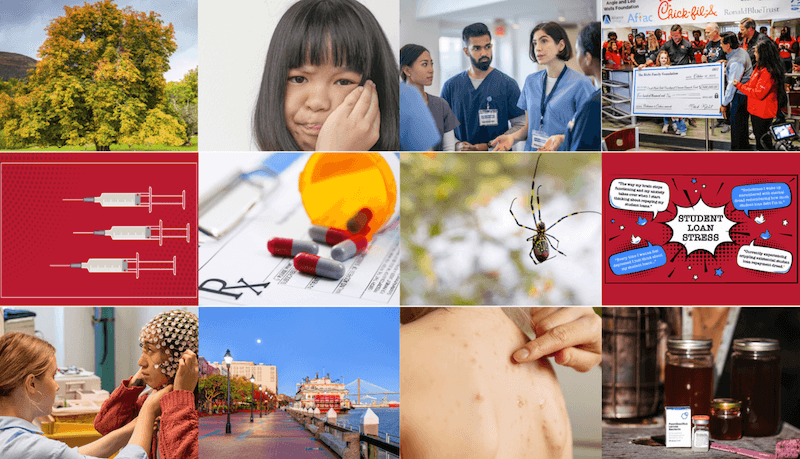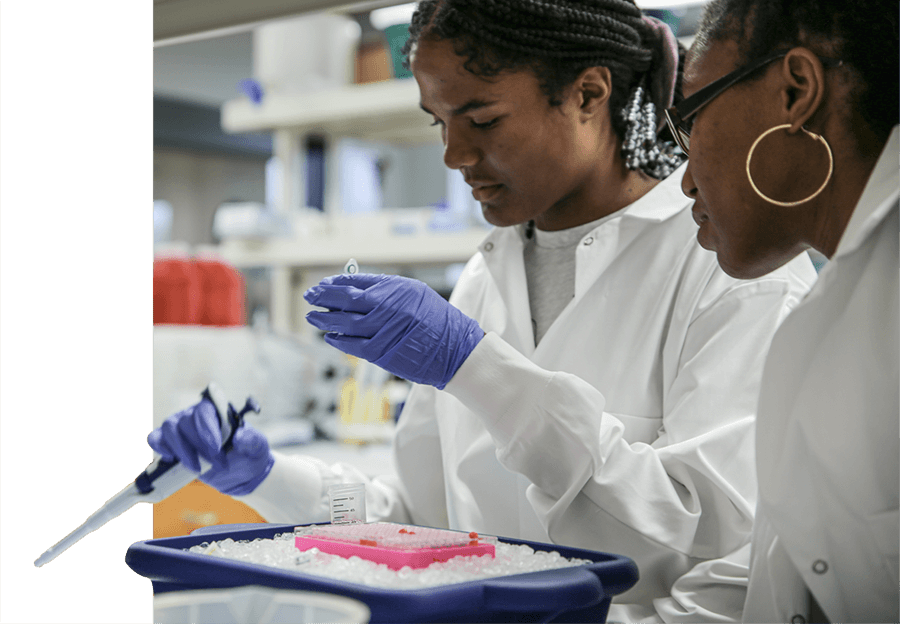University of Georgia faculty and students are working to better understand pollinators and the threats they face. Pollinating bees are vital to healthy crops and a thriving ecosystem, but are under threat of extinction from disease, pollution and other factors. Here are 10 ways UGA is working to help pollinators.
1. Teaching future veterinarians
At the College of Veterinary Medicine, fourth-year students are learning how to care for bees and beehives. Launched in 2020 with the UGA Honey Bee Institute, the elective course teaches students how to handle bees, open hives, places queens in new hives and more. The course is a three-week rotation that educates students on all aspects of the apiary industry. On a recent field trip, the students worked with the UGA Honey Bee Institute to split hives and place new queens in them.
In the past, it was up to hobbyists or commercial beekeepers to maintain the health of their bees. Now UGA is working to train the next generation of veterinarians to care for bees, especially for disease and antimicrobial resistance. The course is taught by Jöerg Mayer, professor of zoological medicine.
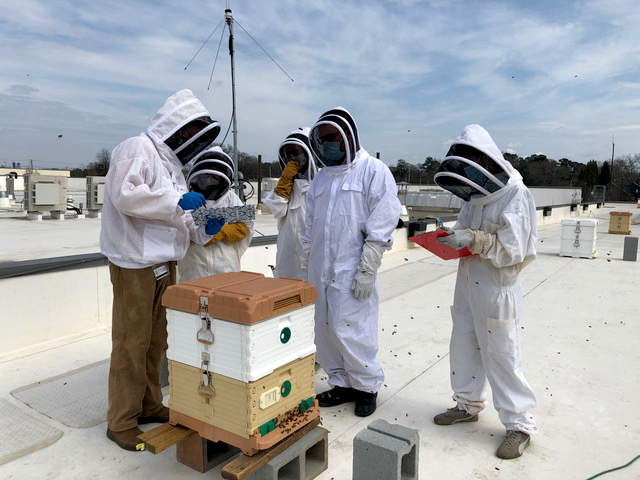
UGA veterinary students inspect beehives on the roof of the Veterinary Teaching Hospital. (Photo by Sam Oakey)
2. Installing new beehives
In March and April, five new beehives were installed on the Veterinary Teaching Hospital roof — bringing the total to eight teaching beehives. A group of about 30 first- and second-year veterinary medicine students on the Bee Treatment Crew maintain the hives and inspect them regularly.
“The hive inspection teaches them valuable lessons and concepts of veterinary medicine which are applicable to many other disciplines taught later on. The idea is that these students learn how to care and manage for a living organism the year before their first clinical rotation at the Veterinary Teaching Hospital,” said Mayer.
Sam Oakey, manager of the Bee Treatment Crew and a veterinary medicine student, said she’s learned a lot working with the beehives. “Beekeeping teaches you all parts of veterinary medicine, from treatment development to surgery — via the proper way to use a hive tool to scrape burr comb!” she said. “We have some fun gadgets to help monitor the hives via Bluetooth and Wi-Fi. There’s a temperature and humidity gauge placed in each hive, and we have cameras that monitor bees entering and exiting the hives. We hope to use data collected by the crew to conduct research and learn more about our bee friends.”
3. Helping students learn more about beekeeping
UGA’s Vet Bee Club has more than 100 members. Its last meeting featured a presentation from the Eastern Piedmont Beekeepers Association. The club is also working on becoming a student chapter of the Honeybee Veterinary Consortium, which connects veterinarians working to save honeybees and promotes appropriate bee care to local communities.
“UGA has the most robust and versatile honeybee veterinary education of any vet med college that I am aware of,” said Mayer.
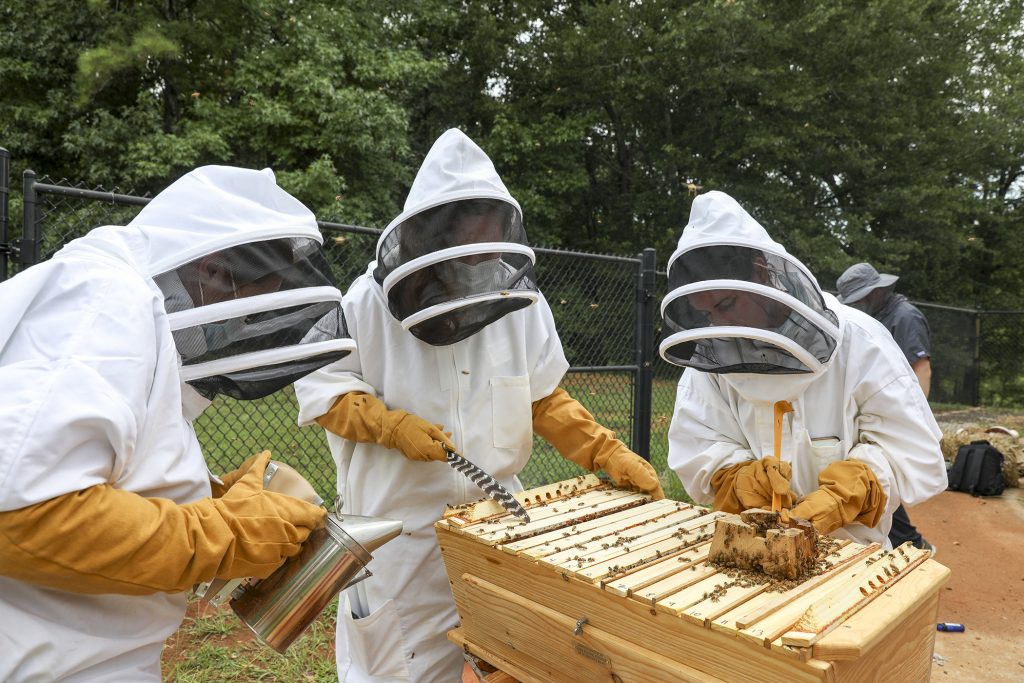
Veterinary Medical Center residents inspect a beehive frame under the guidance of Dr. Joerg Mayer. (Photo by Dorothy Kozlowski/UGA)
4. UGA Honey Bee Program teaches master beekeepers
UGA has been teaching about honeybees for decades. The UGA Honey Bee Program, housed in the College of Agricultural and Environmental Sciences, aims to increase knowledge of bee biology, bee management and crop pollination. The program researches sustainable bee health management issues, pollination and foraging ecology. Researchers work to keep beekeeping at center stage of public discourse and policy. One part of the program is the Georgia Master Beekeeper Program; more than 884 people have taken classes and been certified as Master Beekeepers.
5. Teaching graduate students about bees
The honeybee graduate program within the College of Agricultural and Environmental Sciences is heavily weighted toward problems in applied apiculture and pollination. Recent research areas in the program include pathological effects of parasitic mites on honeybees, integrated control of parasitic mites, interaction of comb substrate on bee sociobiology, blueberry pollination, flower behavior of blueberry pollinators and bee conservation biology. Students participate in beekeeper-oriented workshops, lectures and meetings conducted by the program and are encouraged to help produce UGA Cooperative Extension publications, videos, bulletins and news articles.
6. Researching new technologies to help hives
Mayer also recently authored an article in the Journal of the American Veterinary Medical Association about the use of biosensors to assess the health of the bee colony superorganism. His research looks at how heat sensitive cameras installed in beehives can provide a new perspective and help with modeling and prediction. The sensors are another tool veterinarians and beekeepers can use to evaluate hive health.
7. Researching ecosystems for bees
Researchers from the College of Agricultural and Environmental Sciences are studying bee-friendly grasses, in particular centipede grass lawns, to see if this low-maintenance turfgrass can be used as an ecosystem for bees. The grass, which requires minimal care, could provide a food source to bees, which could pollinate other economically important crop plants. And long term, promoting low-maintenance, bee-friendly lawns could help to turn around the pollinator decline.
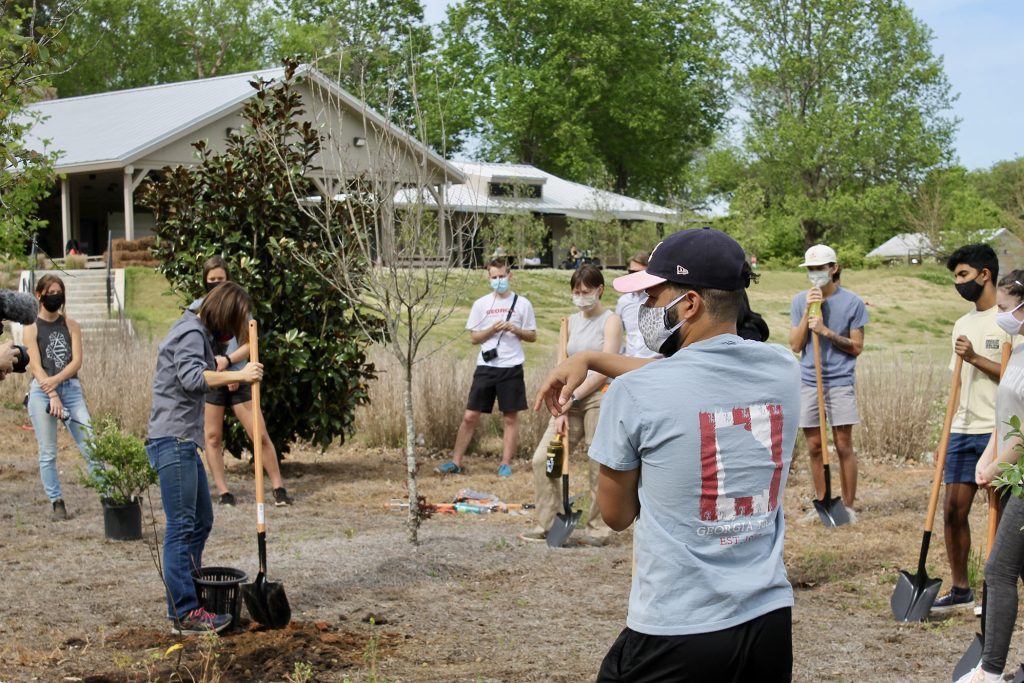
Abbie Dillon, an urban agriculture intern and campus sustainability grant winner, hosted a volunteer event April 16 to install new pollinator-friendly plants at the Lake Herrick Pavilion. (Photo by Emily Chatlen)
8. Installing plants for pollinators
UGA’s campus provides a variety of trees, shrubs and perennials that support pollinator health. The UGA State Botanical Garden of Georgia and Facilities Management Division recently installed plants from the Pollinator Plants of the Year Program at two additional campus locations: the UGA Memorial Garden near the Miller Learning Center and at the granite outcrop at the corner of East Campus Road and Carlton Street.
The Georgia Pollinator Plants of the Year program recognizes top performing landscape plants that support pollinators. The program aims to get more growers to produce these particular plants and to get more gardeners, from commercial landscapers to amateur, to incorporate them into their plantings.
Recently, about 60 edible fruiting trees and shrubs were planted around the Lake Herrick Pavilion to support pollinators.
9. Counting pollinators
The Campus Pollinator Census was held on April 22-23 with help from two UGA service-learning courses. Members of the campus community will have the opportunity to engage in citizen science aimed at protecting pollinators.
UGA Extension will also host The Great Georgia Pollinator Census, a statewide pollinator count, in August.
10. Becoming a certified Bee Campus
As of February 2021, UGA is a certified Bee Campus — one of 115 Bee Campus USA affiliates nationwide and 248 total affiliates. Bee Campus USA helps communities work together to conserve native pollinators by increasing the abundance of native plants, providing nest sites and reducing the use of pesticides.


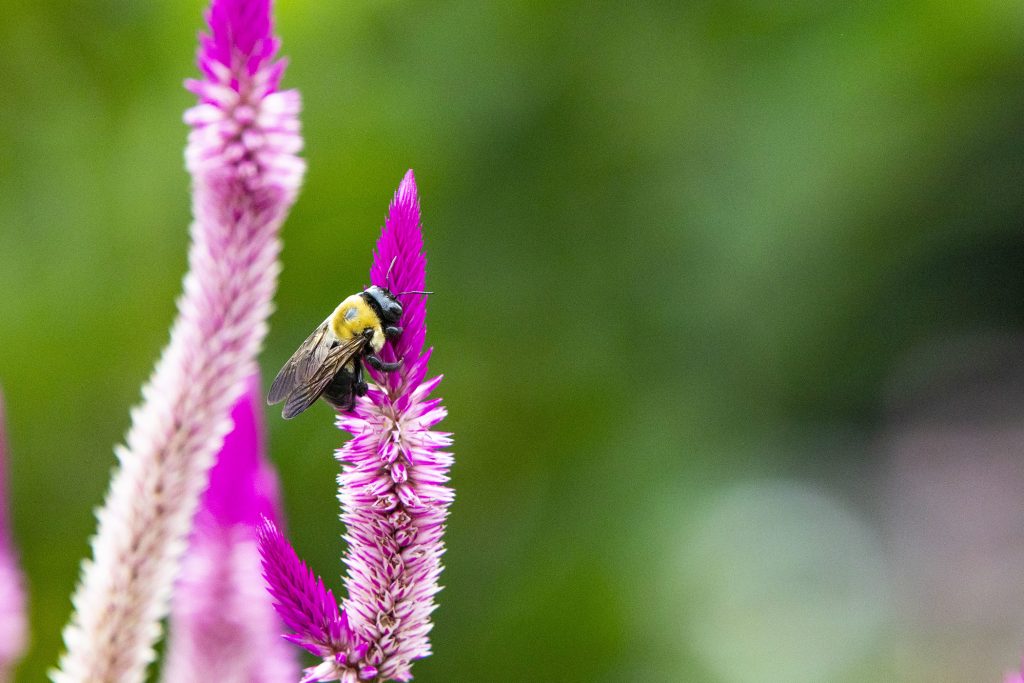
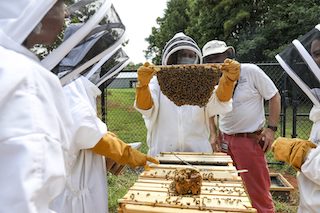


.png)

